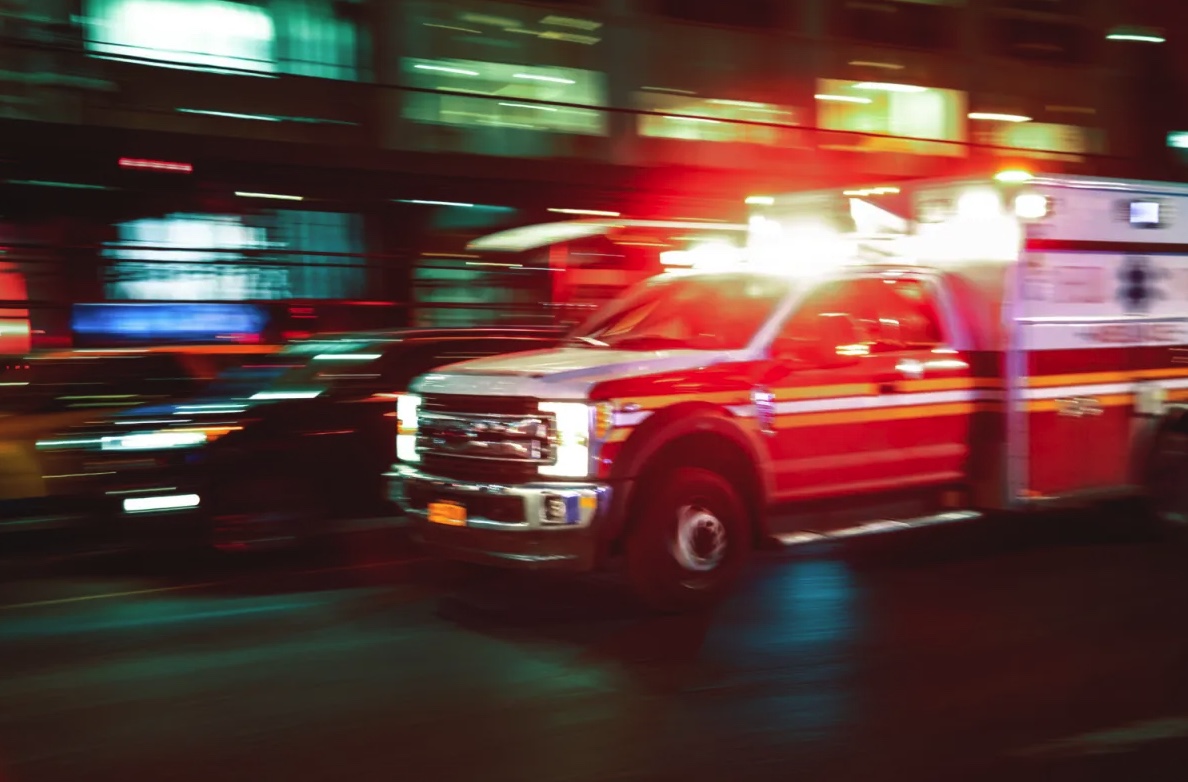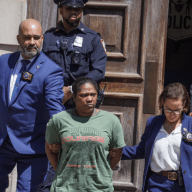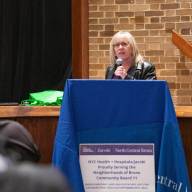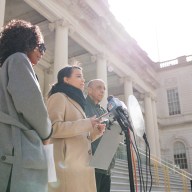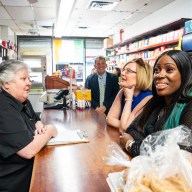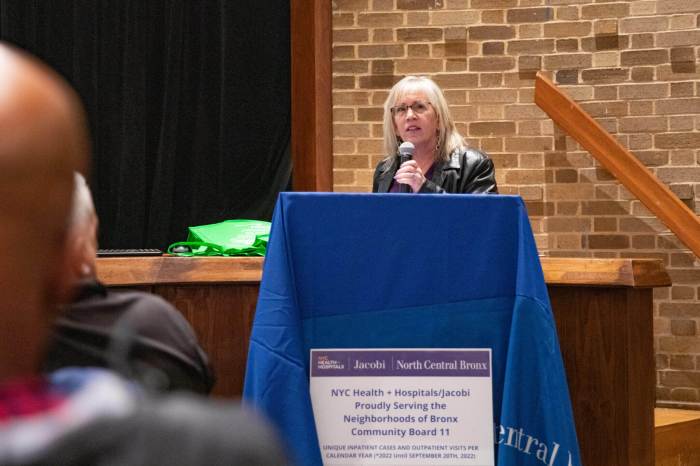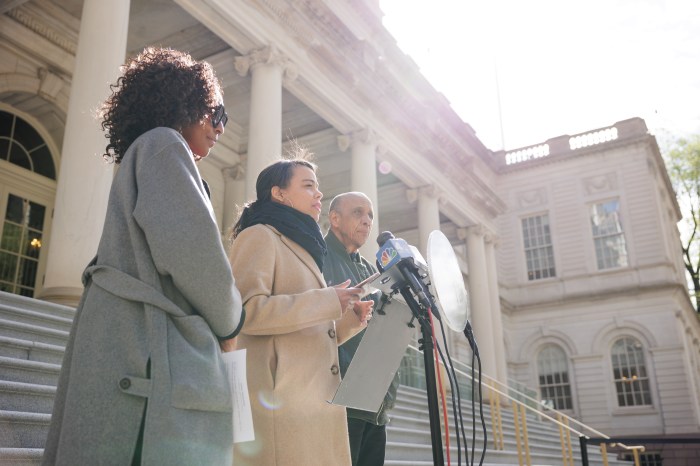Balls were bouncing and bubbles were flying at the Science Fair on June 18, where students from P.S. 96 got to show off the projects they had spent months developing.
The projects were the culmination of Science Explore, an after-school program provided by the Neighborhood Initiatives Development Corporation (NIDC) that focused on merging fun activities and science-education.
The roughly 310 kindergarten through fifth-grade students had been putting together projects after school since March, and in the process, they learned real-world applications for subjects they studied during science classes.
“Our project was finding the sweet-spot on an aluminum bat,” said Kimberly Zapata, who will be entering the sixth-grade in September. She added that when the ball was hit off the sweet-spot, it went much farther.
“It depends on the type of ball, but I would say with the sponge ball we hit it on the non-sweet spot first and it went about five to eight feet, but then when we hit it on the sweet-spot it would go at least 15 to 25 feet,” she said.
Although NIDC has been providing after-school programs at P.S. 96 for more than 20 year, this was the first year the agency was able to provide the science program, thanks to a $5,000 grant provided by Assemblywoman Naomi Rivera. The program was offered to students twice a week.
“It is imperative that after-school programs such as these remain a focal point in curriculums throughout the Bronx,” Rivera said. “We must continue to provide a safe, fun and stimulating learning environment for our children. It is critical to do all we can to create a path for our scientists of the future.”
According to William Foster, executive director of NIDC, the program was aimed at making science fun for the students.
“The role of an after-school program is to complement what they learn in school, and an essential part of that is helping young students be able to relate to and enjoy math and science,” he said, adding that the group plans to look for more funding to be able to continue the program next year. “We’re looking to expand the program and offer additional math and science programs so that students will not view science as foreign, but as something that makes up their world.”
With projects such as making art prints with bubbles, learning to create an ooze, and trying to classify whether something is a liquid or solid, all the final projects focused on melding science with everyday activities, said NIDC program director Jason Williams.
Brianna Martinez built a volcano out of clay and made it erupt using vinegar and baking soda. She said her group had to figure out which combination of chemicals produced the best eruption.
“I liked finding what we were going to use,” she said. “We did the baking soda with vinegar, which worked. It started to foam up and spilled, so we had fun cleaning that up.”
For Brianna Martinez, an upcoming sixth-grader, the lessons not only taught her about science, but also about working as part of a team.
“It was cool, but the molding part was hard because we were using too much water. Then eventually we all worked together and it was better,” she said. “I’ve done science projects since second or third-grade, but this one was much better, because it was with my friends that I’ve known for a really long time.”







